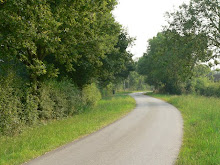Times change.
Taking eggs from birds' nests is unthinkable now.
But when I was growing up in the 60's and 70's it was commonplace.
Ironically, it was taking birds eggs which lit the fuse for an interest and intimacy with nature, and a concern for living things.
I was never cool when I was a kid, but amongst the boys I mixed with, having an egg collection helped. Mine was a shoebox, lined with cotton wool. I don't suppose it had more than two dozen specimens. But that represented considerable shinning around in hedgerows and up trees to get them, not to mention the acts of reconnaissance involved in spying out where the nests were. This really takes you close to nature, to the habits and subterfuges of birds, to the small details of their homes and hiding places.
I suspect that if you showed different birds eggs to children now, they would have no clue as to what they were, other than eggs. But a recent mention by a friend of The Observer's Book of Birds Eggs brought memories flooding back. The sheeny ovals of pigeon's eggs. The odd spherical shape laid by barn owls, as though to accommodate their own equally odd head shape. The blues and greens of duck and geese species - their eggs very edible, though fearsome protein rushes. The mottled sharp ovals of birds of prey. And, for me, the most beautiful of all, the yellowhammer's. Designed in one of nature's Jackson Pollock moments.
A few of us boys had collections which were of a size where we could talk about them, show them off, create exclusivity around them, even trade specimens with each other. .And, of course, a bit like fishing, there were those which got away - the nests where we were sure we would find a hoard but were unlucky. The nests where there was a single egg - even we had the ethics not to take those, dimly aware that some sort of compassion was needed in this game. The eggs we got which met disaster as we descended a tree or tried to improvise some means of carriage. Those which met with accidental destruction as we tried to blow them. These narratives kept a small group of us in a loose, competitive togetherness. And we enjoyed keeping undesirables out. There was one poor boy - virtually a halfwit - for him we would make up ridiculous bird names, and sell him the commonest hedge sparrow or house sparrow eggs on the pretence that they were from the blue ouzley bird, or some such cruelty. If, as was often the case, he had no money, we would send him to the local shop to steal things for us. Even when his errands were done, we excluded him, just from spite, a horrid wish to persuade ourselves we were superior.
Now, every year, the RSPB, which incidentally has more members than any or all political parties in the UK, tells us that some species or other is under threat. The death row list seems to change every year, to the extent it has me questioning its credibility. Yellowhammers were on it, I seem to remember. Lapwings too. The researchers behind the list clearly hadn't been round here. Lapwings blow like thrown handkerchiefs on every breeze. The hedges are golden with yellowhammers.
But they are safe from one threat at least. I don't take their eggs any more.
But I have ordered a copy of the Observer book. Just in case.
Sunday, 10 April 2016
Subscribe to:
Post Comments (Atom)

















To my young and untutored mind the Observer's book of Birds Eggs sort of legitimised taking eggs. Happily, I was fairly inept at it. But I'm still mortified, even though the longer term outcome was far more positive in terms of a life-long love of observing nature in a non-intrusive fashion.
ReplyDelete